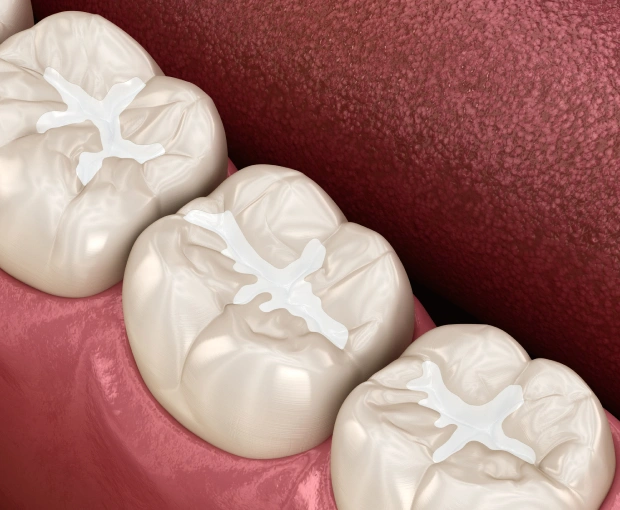
Protect Your Teeth With Dental Sealants
Dental sealants are a thin, protective coating applied to the chewing surfaces of back teeth, such as molars and premolars. These teeth often have deep grooves that are difficult to clean and prone to cavities. Sealants create a smooth surface, making brushing easier and helping block out food and bacteria. Durable and long-lasting, sealants should still be checked regularly to ensure they remain intact and effective.
Why Dental Sealants Are Beneficial
Sealants provide extra protection for teeth, particularly in areas that are more prone to cavities. They are an effective preventive solution for:
- Kids and Teens: Sealants work best when applied as soon as the first permanent molars emerge—typically around age 6. They help protect teeth during the cavity-prone years up to age 16.
- Adults: Even adults with deep grooves in their teeth can benefit from sealants, preventing future decay before it starts.
- Young Children (Baby Teeth): In some cases, sealants may be recommended for baby teeth that have deep grooves and a higher risk of cavities.
How Dental Sealants Are Applied
Applying sealants is quick, painless, and usually takes just a few minutes per tooth. The process includes:
- Cleaning and Drying: The tooth is thoroughly cleaned and dried.
- Isolation: Cotton or a small barrier is placed to keep the tooth dry.
- Etching: A special solution is applied to lightly roughen the tooth surface, helping the sealant adhere better.
- Rinsing and Drying: The solution is rinsed off, and the tooth is dried again.
- Sealant Application: The sealant is painted onto the tooth’s surface.
- Curing: The sealant hardens either naturally or with the help of a special curing light.
To maintain your sealants, continue brushing and flossing daily, follow a balanced diet, and schedule regular dental checkups. Sealants are a simple, effective way to protect your teeth and keep your smile healthy for years.
